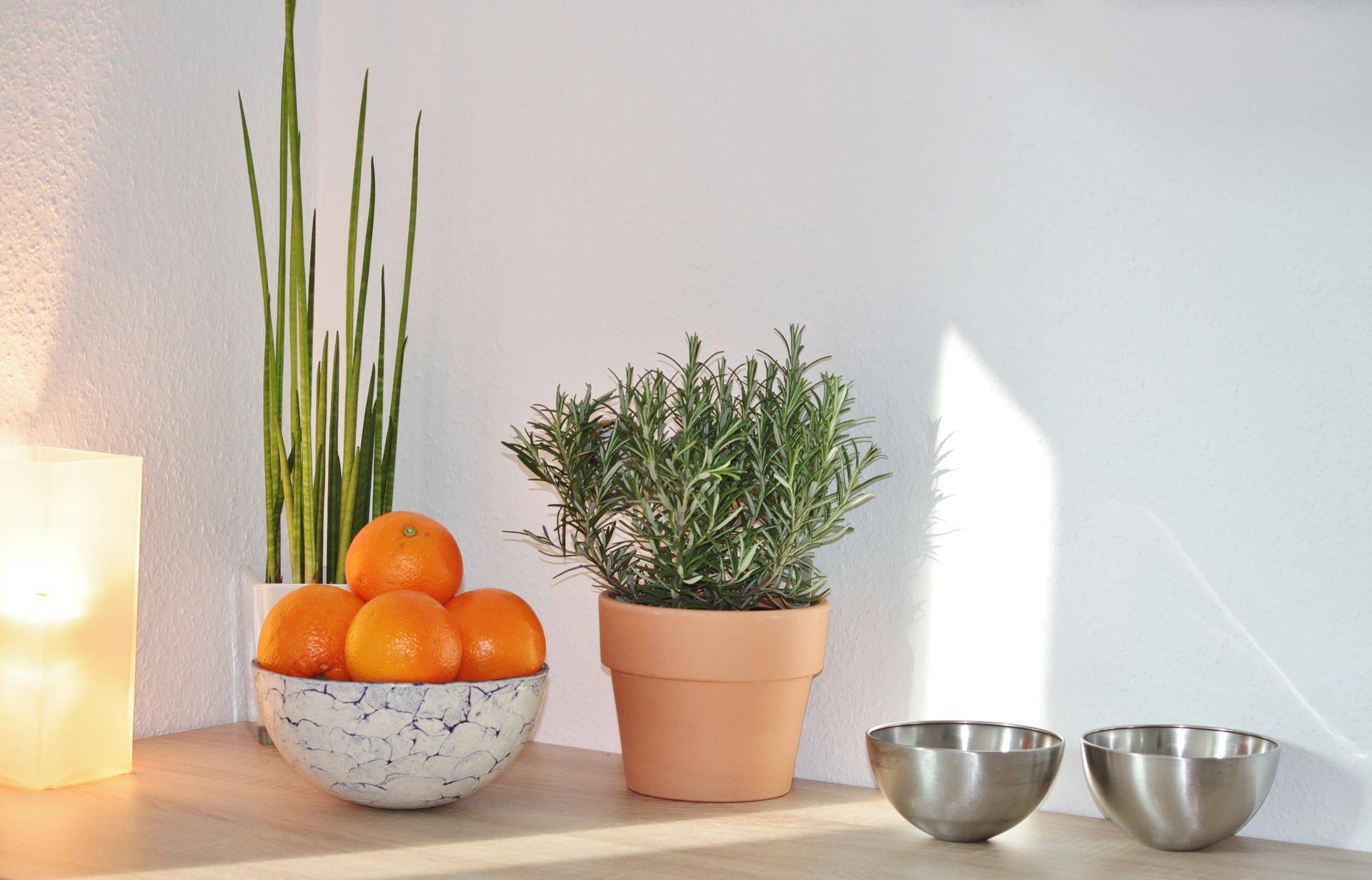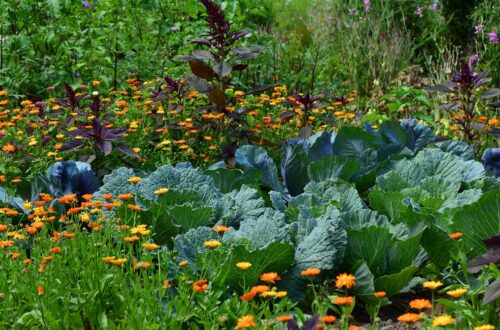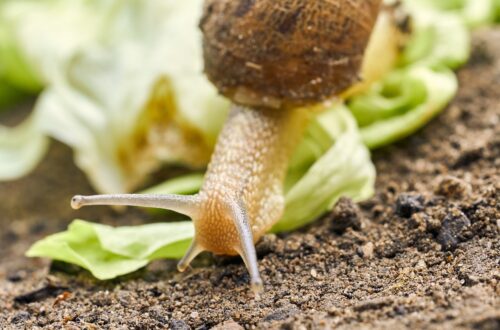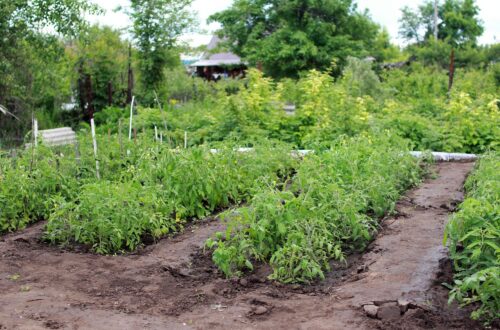Affiliate disclosure: As an Amazon Associate, I may earn commissions from qualifying purchases.
If you love cooking with fresh herbs, there’s nothing like growing them at home. In fact, even if you prefer to only cook with dried herbs, it’s super easy to grow your own herbs for dehydrating too. Even better, you don’t need a lot of space to do it!
While in-ground, raised bed and container gardens are all great, for anyone who is working with a small space, herbs are some of the best plants to grow indoors. They are beginner friendly, generally quite compact in size and are perfect plants to grow if you want to cut grocery costs.
If you’re interested in starting your own indoor herb garden, you’ve come to the right place. We’ll cover everything you need to grow herbs at home, from picking the right growing containers to harvesting and storing your fresh, homegrown herbs.
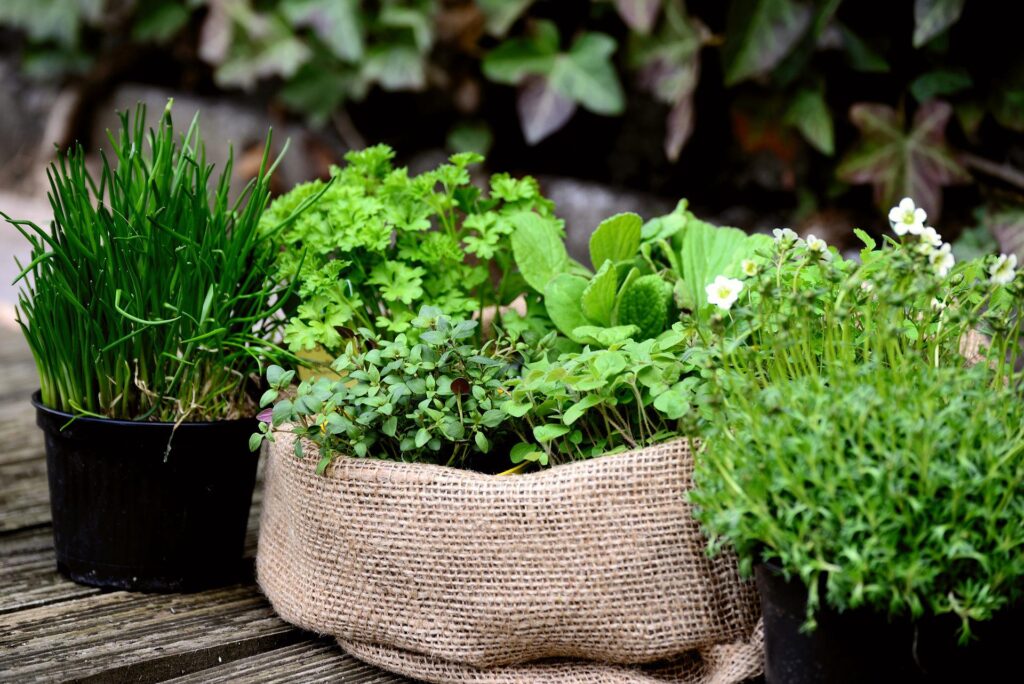
Growing Herbs Indoors for Beginners
Starting your own windowsill herb garden isn’t difficult, and it doesn’t need to be expensive either. There’s an herb garden option for any budget, all you need are a few simple supplies and you’re ready to get started.
Picking the right container for your herb garden
The first part of growing your own indoor herb garden is to decide what sort of planters you’ll use and how many plants you want to grow. You can grow just a few herbs in basic terracotta pots or upcycled containers or you can create a more elaborate set up by picking up a premade indoor herb gardening kit or self watering planter. It’s up to you.
Just keep in mind that any planter you use should have adequate drainage holes to prevent common issues like waterlogged soil and root rot.
Some of my favorite planters types and indoor herb growing kits:
- Terracotta pots. You can’t go wrong with terracotta pots. They are inexpensive, come in a range of sizes and their warm, neutral color goes with just about every décor. They are also porous, which means plant roots can breathe better and they don’t hold water the way plastic pots do.
For something a bit different, these eco-friendly natural cork pots are fun too! - Ceramic planters come in just about every shape, size and color you can imagine. This means it’s easy to find a pot to coordinate with your home, no matter if you prefer minimalistic vibes or something a bit more colorful. Just make sure you look for pots with drainage holes at the bottom.
- Upcycled containers are an ideal choice if you’re on a budget or you’re looking for a super earth-friendly herb pot. You can certainly thrift used plant pots, but you can also upcycle other sorts of containers, like coffee mugs, bowls or old yogurt containers. Just make sure you drill some drainage holes in the bottom of your containers to avoid issues like root rot.
- Self-watering planters are great for anyone who travels a lot or for new gardeners who are just learning the ropes of indoor gardening. These sorts of planters take all of the guesswork out of when and how much to water your plants and make caring for your herb garden a breeze. Many options even come with gauges that display how much water is left in the reservoir so you know when to refill.
- Most premade indoor herb kits come with everything you need to start your own herb garden at home, so you don’t need to worry about buying soil or seeds separately. Some options come with individual pots, while some systems include everything in a single unit, including a grow light.
Soil
Herbs need rich, well-draining soil to thrive, so you’ll want to pick a good organic potting mix to start. While potting mix is usually okay on its own, to boost plant growth and improve soil structure a bit, you can also add some compost or worm castings to the mix.
If you do choose to add compost or worm castings, just keep in mind that moderation is key. Too much of anything, including compost, can cause issues, such as poorly draining soil. Adding 1 part compost to 4 parts potting mix is great for most herb plants.
(While you can purchase premade compost or worm castings, you can also make your own at home. Check out my tutorials on Bokashi composting and vermicomposting to get started.)
Water
Different herbs have different watering requirements, which tends to cause more trouble than anything for beginning herb gardeners. Woody-stemmed herbs, like rosemary and thyme, come from arid regions of the Mediterranean and so they don’t need much water. Tender-stemmed herbs, on the other hand, need regular and consistent watering.
In general, tender-stemmed herbs should be watered once or twice a week. To check if your plants need water, gently insert your finger into the soil. If the soil feels dry to the touch, it’s time to water!
Once established, woody-stemmed herbs should be allowed to dry out some between waterings. Plants can last one to two weeks without watering.
When watering, always make sure your pots are draining well and your plants aren’t sitting in water. Moist soil is good, but soggy soil isn’t. Also, try to avoid getting water on your plant leaves as this can promote issues like mildew. A small watering can with a slender spout can help direct water to plant roots.
Lighting
Herbs like sun and lots of it, so try to locate your indoor herb garden in a brightly lit window (south-facing windows are usually best). Making sure your plants get 6 to 8 hours of full sun is key to ensuring your plants grow lots of lush leaves.
Herbs that don’t get enough light may become spindly, stretch towards the light, have yellowing leaves or experience leaf drop.
If you don’t have a bright window to keep your herbs in, you can pick up an LED grow light or bulb to use with an existing lamp.
Fertilizer
If you amended your potting mix with compost or worm castings prior to planting, you may not need any fertilizer right away. However, to keep your herbs growing and producing lots of tasty leaves in the long run, try feeding them every once in awhile with an organic nitrogen-rich fertilizer.
I personally love using liquid fertilizer for my indoor herbs, but granular choices work well too. Just be sure to follow the manufacturer’s instructions when applying to determine how much to add and when. Also, if you opt to use granular fertilizers, don’t allow your fertilizer to touch your herb stems as tissue burn can occur.
For an all natural choice, your herbs will love a DIY fertilizer tea made out of compost or worm castings too.
Best Herbs for an Indoor Kitchen Herb Garden
While there are lots of different herbs you can grow indoors (including some medicinal herbs), some of the most popular herbs for beginners to grow include:
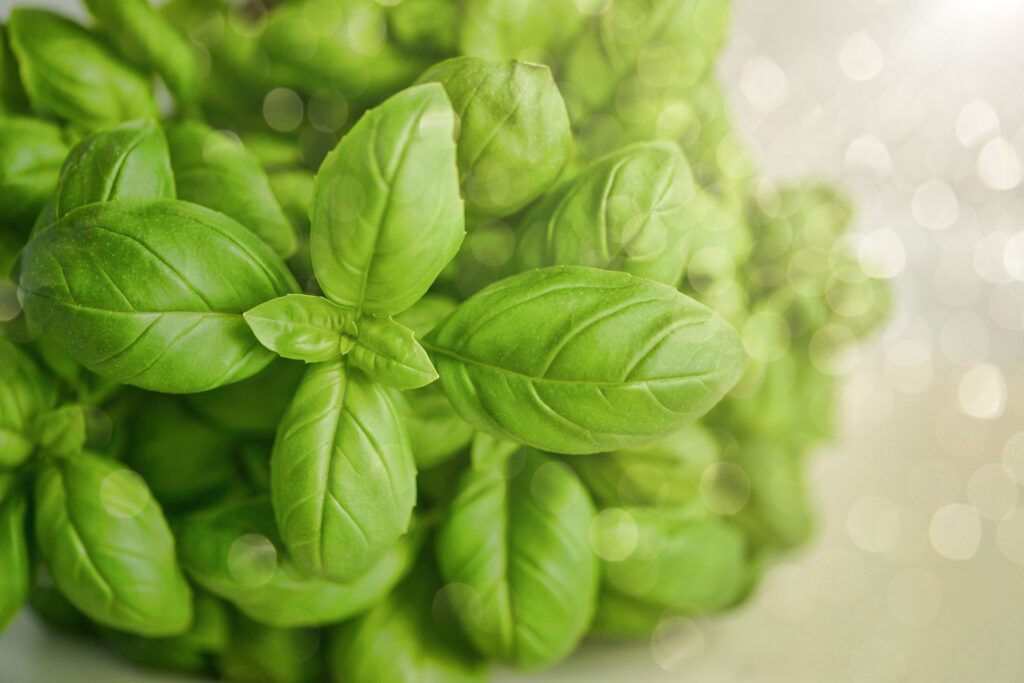
Basil
Homegrown basil is a must-have for pesto lovers, but fresh basil is amazing when chopped up and added to salads, pasta dishes and sauces too.
Super easy to grow, basil loves consistent watering and lots of bright sun. Too much sun can cause leaf scorching though, so if your plant’s leaves start to lose color, you may want to move your basil to a shadier window.
Basil propagates well in water, so if you want to make more plants, you can! And if you aren’t already sold on growing basil, it comes in lots of different varieties too, including: Genovese basil (the most common variety used in pesto), Thai sweet basil (excellent in Thai cooking and Vietnamese pho) and Holy Basil (an adaptogenic tea that has been used to treat issues like stress.)
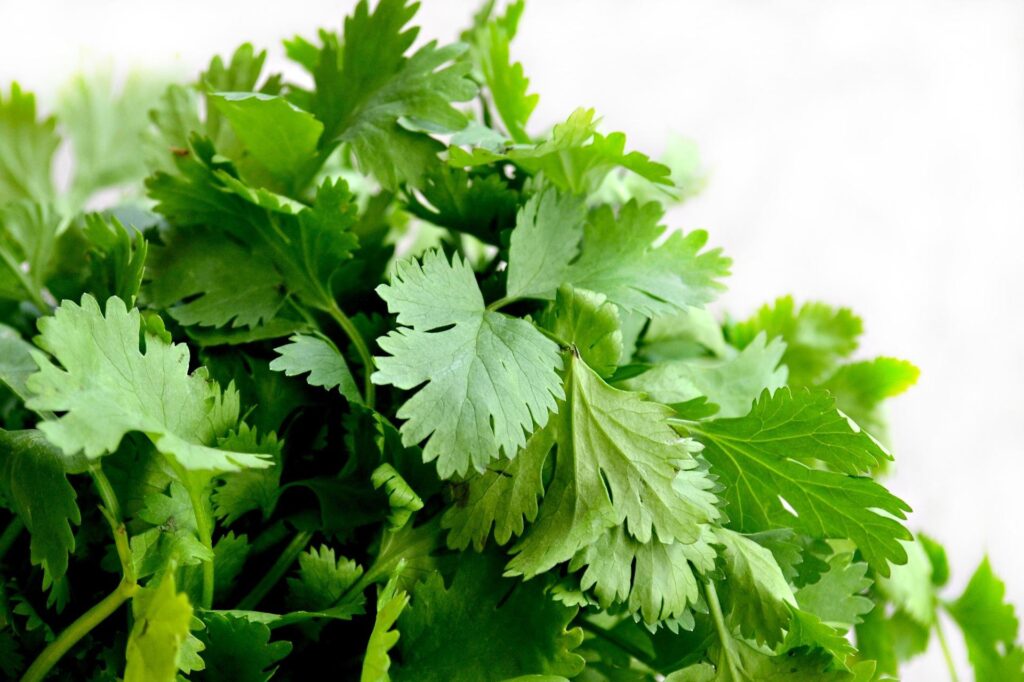
Cilantro
Like basil, cilantro loves lots of water and sunlight and is a good beginner-friendly herb. Cilantro can often struggle with hot temperatures when grown outdoors, so it is a good choice for a window herb garden.
When allowed to go to seed, cilantro produces another much prized spice: coriander. Just allow your cilantro seeds to dry, grind them up and — voila! — fresh coriander!
Cilantro is a key component in many Tex-Mex and Indian dishes, so grow lots of it. You’ll use it by the handful!
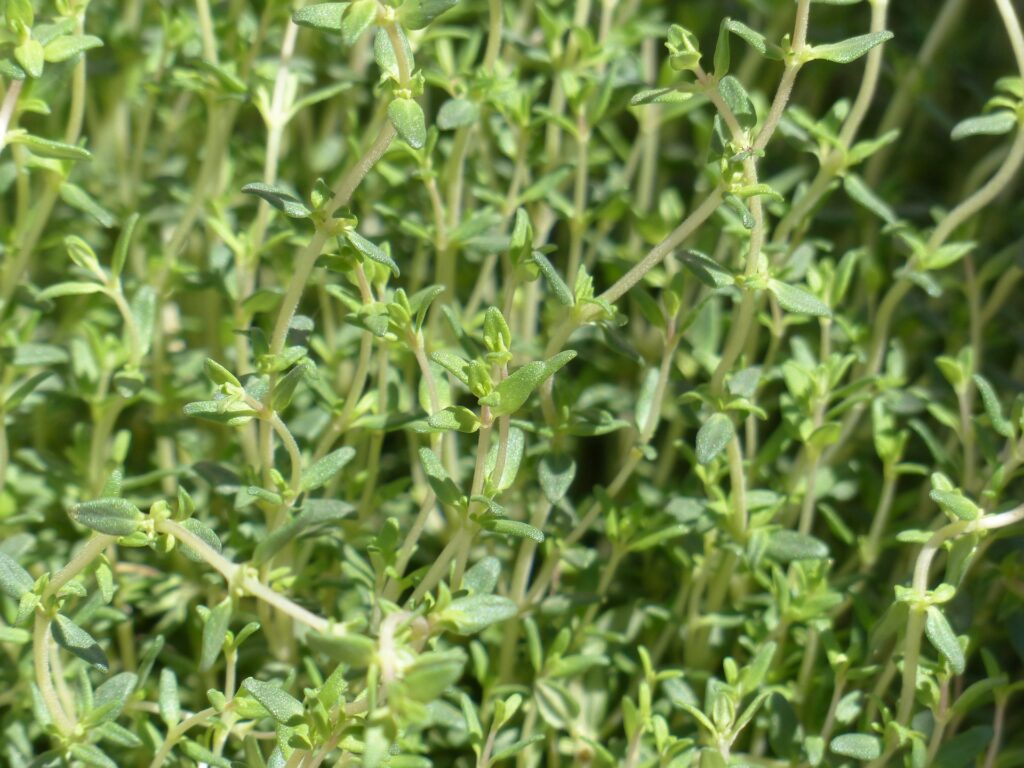
Thyme
Thyme is a woody-stemmed herb, which means it doesn’t need as much water as basil does. Instead, allow soil to dry out a bit in between waterings and then give your plant a good, deep drink.
A wonderful choice for a container plant, thyme stays pretty small and comes in different varieties including German thyme, French thyme and lemon thyme.
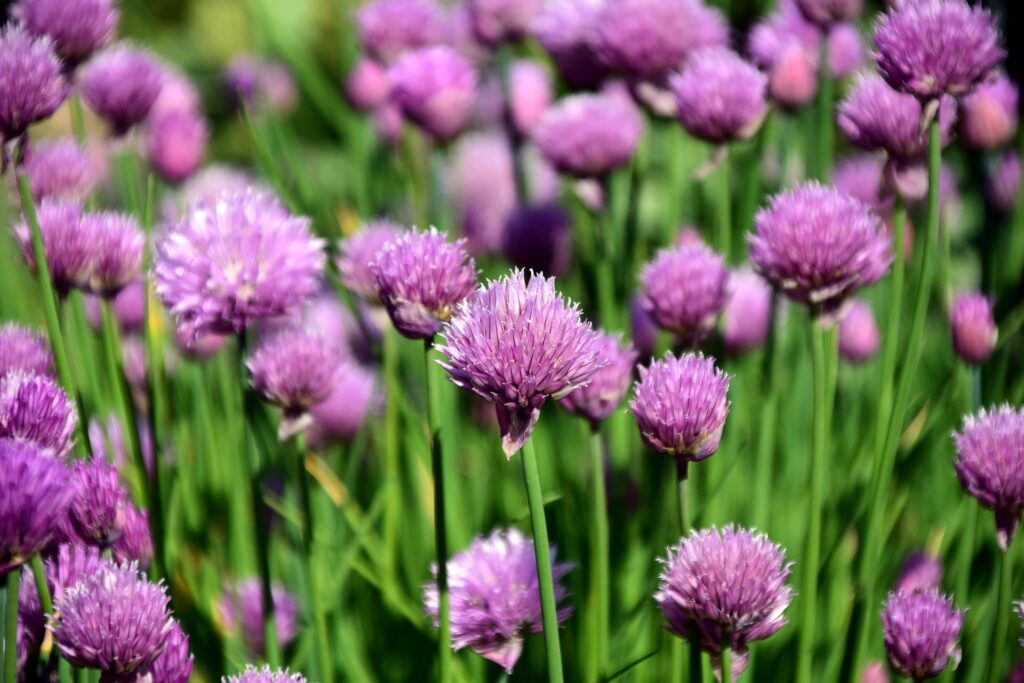
Chives
There’s nothing like some chopped chives to elevate a steamy, baked potato. But chives have so many other uses too. They’re delicious with scrambled eggs, as a garnish on roasted dishes or as a quick flavor boost for salads.
Chives stay compact so they’re great for containers and they’re usually pretty forgiving about their care requirements. For a special treat, allow your chives to flower and then snip off the edible buds. They make awesome salad toppers!
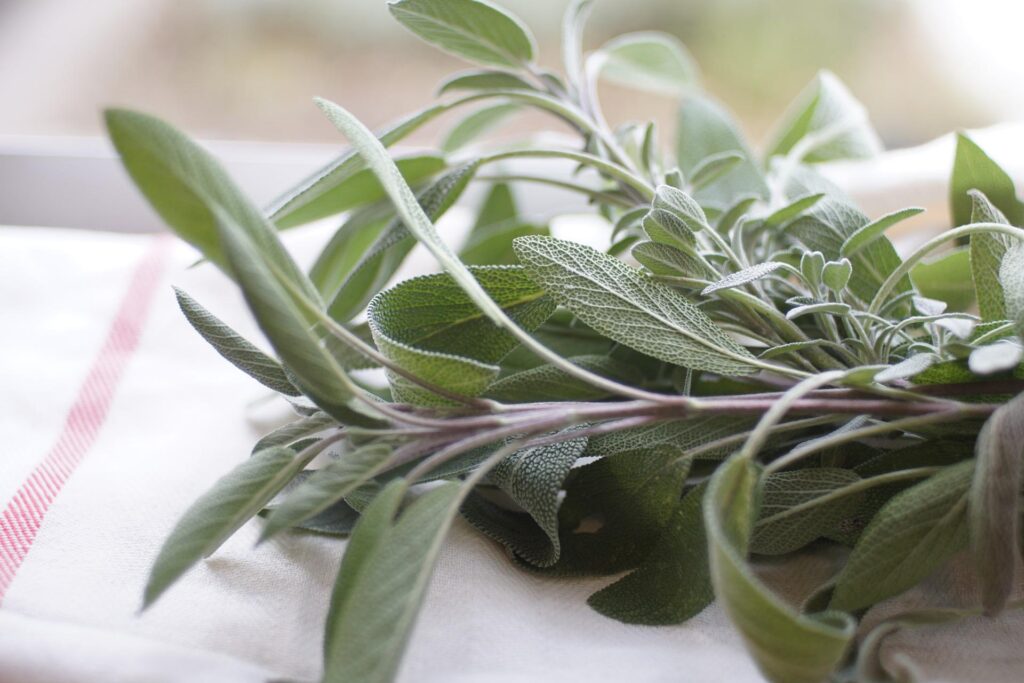
Sage
Sage is one of the best plants to add to an backyard pollinator garden, but it works as a potted plant too. Just keep in mind that sage can grow up to 3′ tall, so you may need to prune your plant occasionally to keep it small.
Sage is another woody-stemmed plant that doesn’t need a lot of water. Look for purple and variegated sages for more funky looking leaves.
If you love warm, hearty dishes in autumn and winter, grow some sage. This is one of the tastiest herbs to add to soups, stews and roasted meat or vegetable dishes.
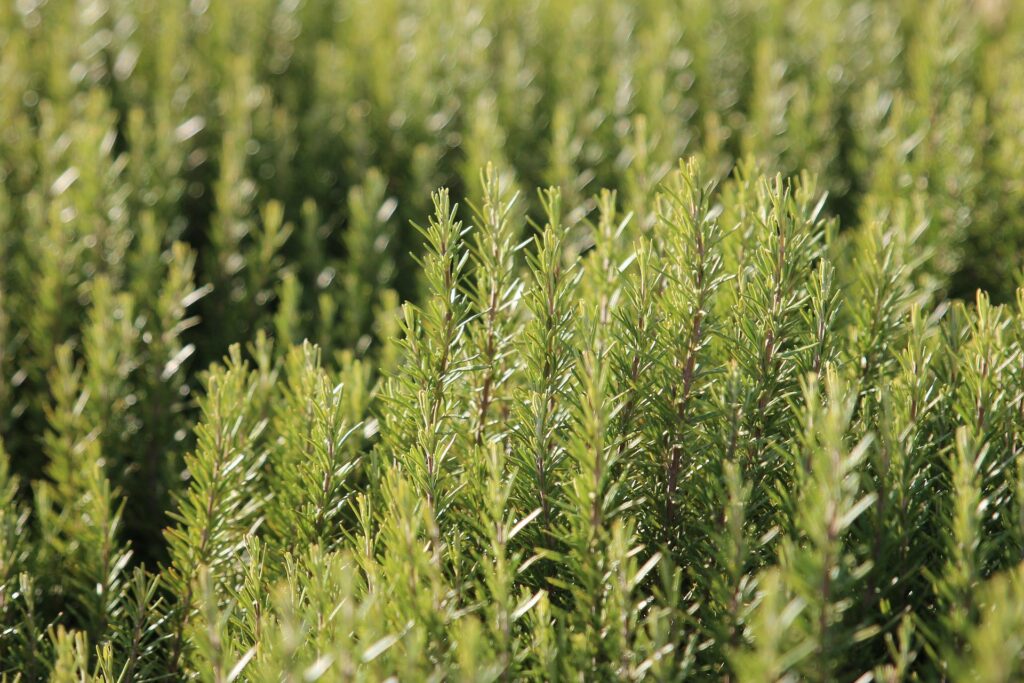
Rosemary
Rosemary is a common indoor plant in part because it’s tasty, but also because it is not cold-hardy and doesn’t do well in winter in zones 6 and below. Its compact size and lovely fragrance makes it well-suited for a windowsill garden though!
Rosemary doesn’t like a lot of water, but it does LOVE lots of humidity. That’s why I always recommend growing rosemary near a humidifier or on a pebble tray if you want to keep this plant inside. Normal household humidity levels are usually a lot lower than outside, so indoor rosemary tends to get crispy without some extra humidity.
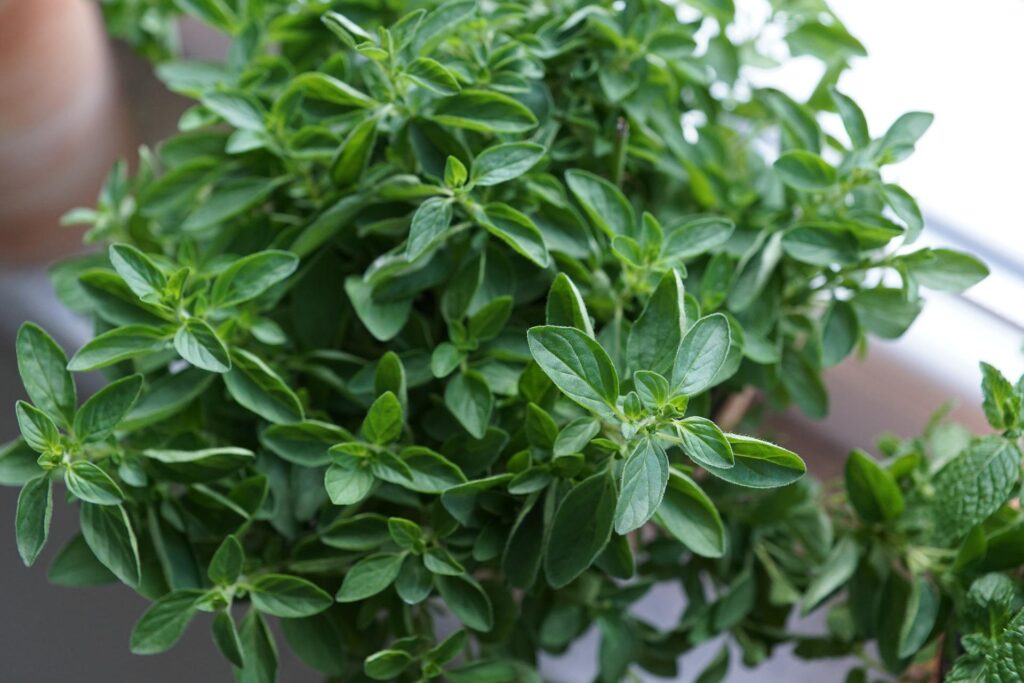
Oregano
Oregano is a lovely flavor to add to homemade pizza and pasta dishes. It also adds a wonderful zing to fresh salads and baked dishes too.
Just provide your oregano plant with lots of bright sunlight and minimal watering and you’ll be set.
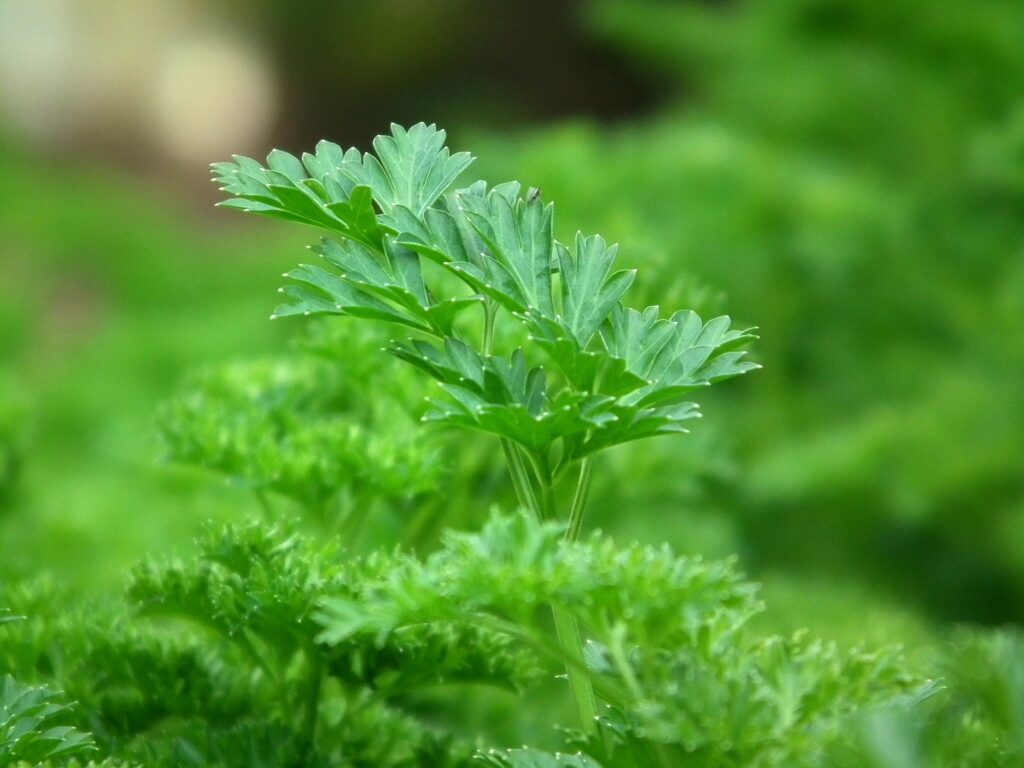
Parsley
Parsley comes in both curly and flat-leafed varieties. But, most gardeners agree flat-leafed parsley is a little easier to grow, so if you’re a beginner, start there.
Though you’re most likely to see parsley used as a garnish, it’s so much more than that! Fresh parsley is wonderful in green smoothies and Greek and Middle Eastern dishes, like tabbouleh.
For the health-conscious, parsley is chocked full of vitamins and antioxidants, like vitamins A, C and K.
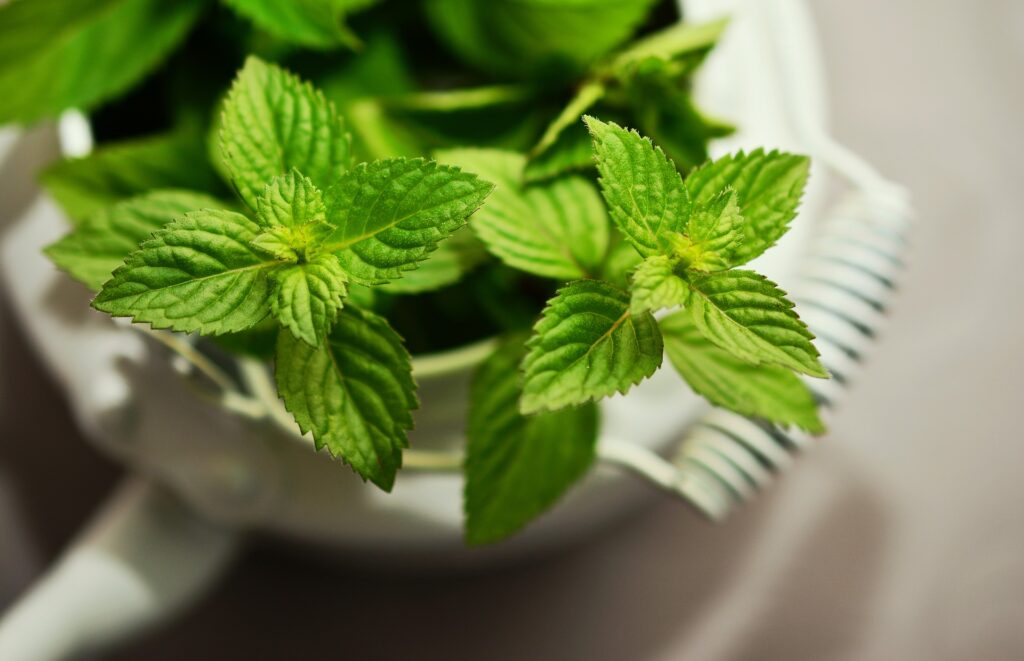
Mint
Mint is one of the easiest plants for beginners, but it can be quite the hassle to grow outside because it tends to spread EVERYWHERE. In an indoor kitchen garden, mint stays much more manageable and it’s pleasant scent is a nice pick-me-up while doing dishes if you keep your plant near your kitchen sink.
Mint comes in lots of different varieties, including peppermint, spearmint, chocolate mint and apple mint. I’d recommend browsing seed catalogs for unique flavors because there are A LOT.
Mint goes well with Greek and Mediterranean dishes and is one of the few herbs that works equally well in savory and sweet dishes (mmm, mint chocolate chip cookies!).
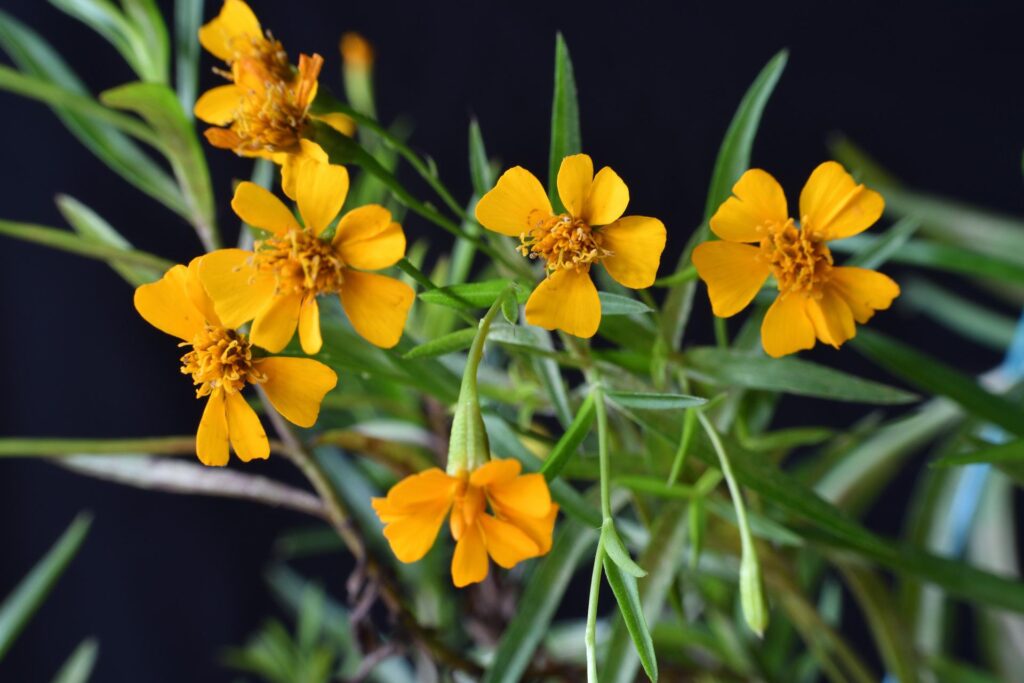
Tarragon
A less commonly used herb, but a tasty one nonetheless, tarragon is a delight in seafood dishes. It also makes for a tasty treat in herbed butter recipes or when steeped in vinegar for a tarragon vinegar salad dressing.
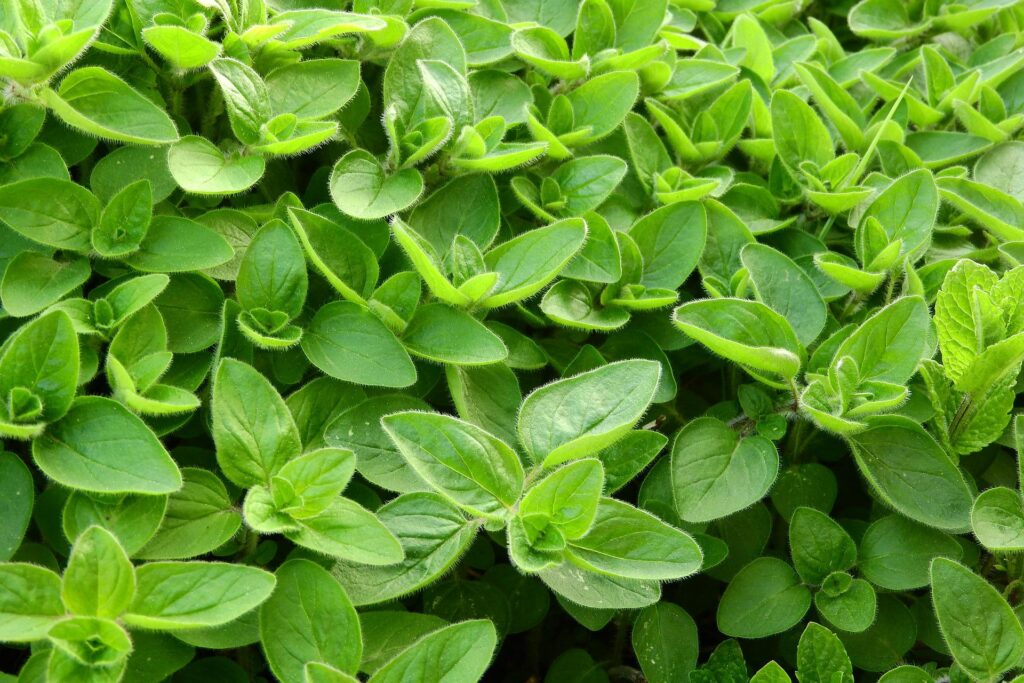
Marjoram
Another less commonly used herb, marjoram is delicious in roasted dishes, soups and garden salads. Marjoram has a similar flavor to oregano, but it’s slightly more complex, so try it out in Italian fare too!
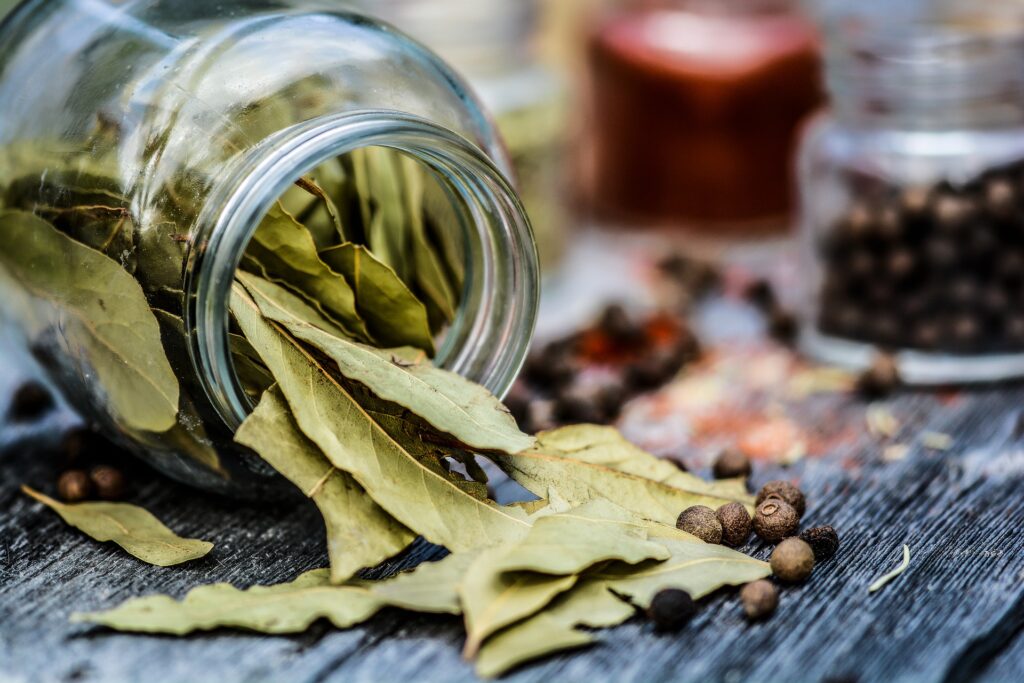
Bay Leaves
Who knew you could grow bay leaves at home? I sure didn’t!
Bay plants are slow growing and usually difficult to locate, so I wouldn’t count on finding them in seed catalogs or at your local nursery. They are usually available online though.
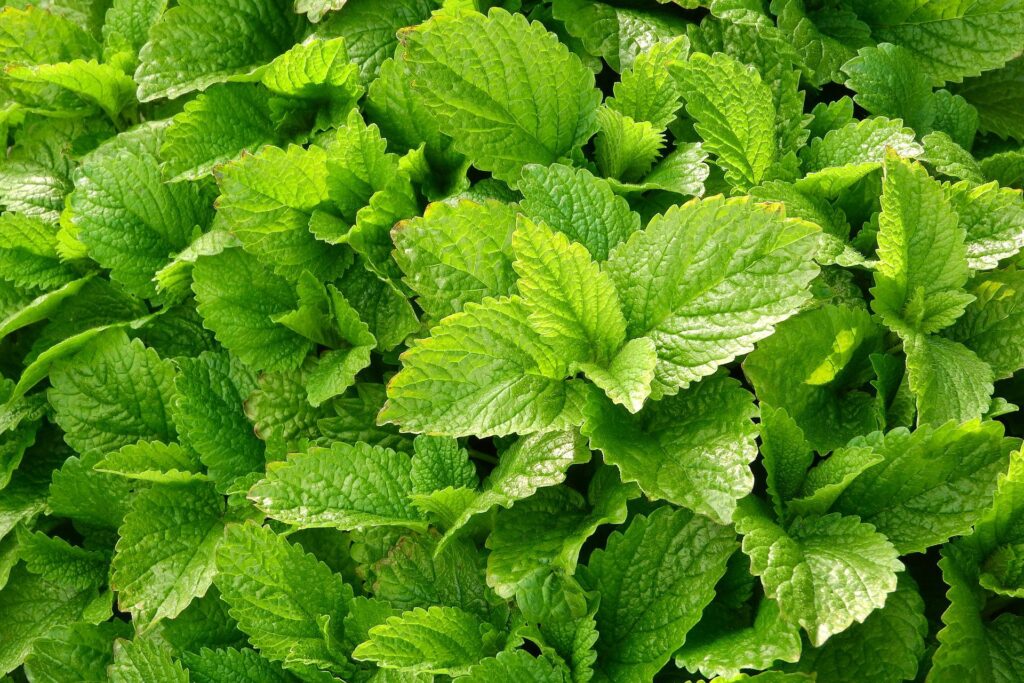
Lemon Balm
Lemon balm is a type of mint, so it’s very easy to grow. While you can chop it up and add it to salads and other recipes, my favorite way to use lemon balm is brewing it in a homemade, sleepy-time herbal tea.
Leaves can be used fresh or dried and crumbled up.
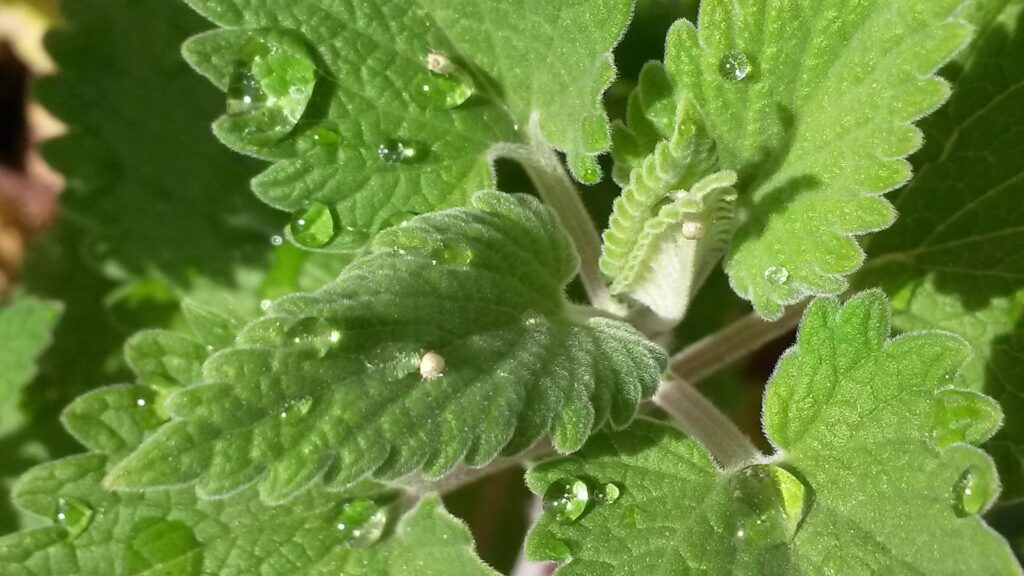
Catnip
Okay, this one’s obvious. If you have kitties, like I do, you need to appease those little beasts with an herb plant all their own: catnip.
Catnip is a type of mint and is very easy to grow in containers. The only thing you’ll need to look out for is your kitties munching off the plant before it can grow!
Since a lot of store-bought catnip isn’t organic, growing your own is the single best way to ensure your furry friends are getting the absolute best! (Tip: These kitty pots are too cute not to share!)
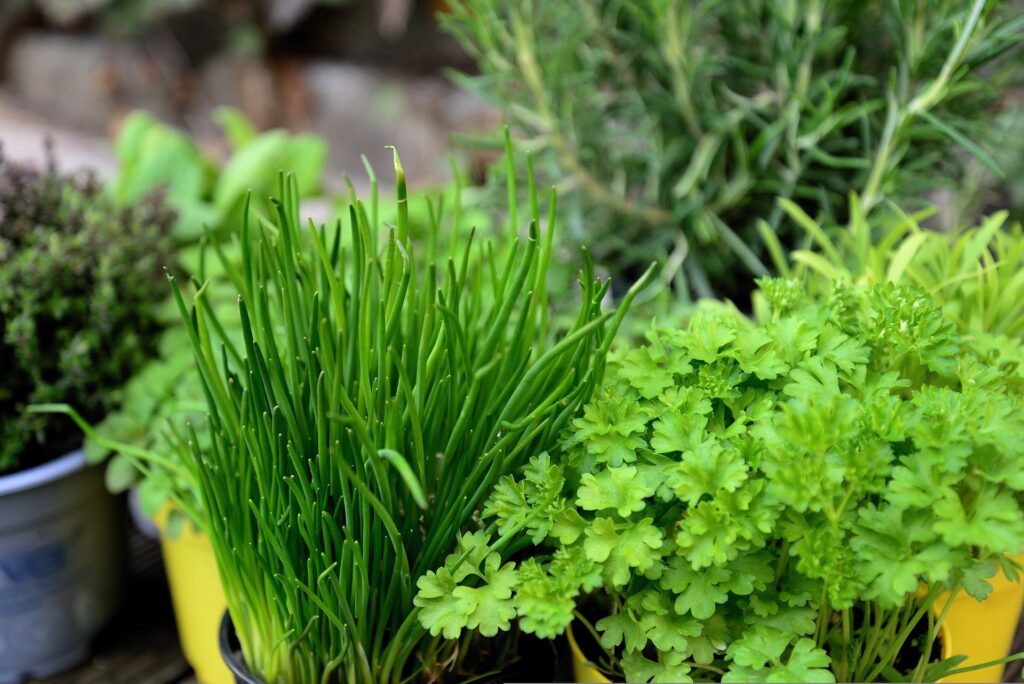
Commonly asked questions
Should I grow my plants from nursery starts or seeds?
That’s really up to you. Herbs can grow well from either.
Nursery starts will provide you with fresh herbs for harvesting sooner, but they are more expensive. You’ll also be more limited in what you can grow, as many types of less common herbs aren’t available as starts.
Seeds will take longer to grow, but they are less expensive and you can grow just about any herb type from seed.
In my experience, tender-stemmed herbs are much easier to grow from seed, while woody-stemmed herbs can be a bit tricker and take a lot longer. I have much better luck starting woody-stemmed herbs from cuttings.
Where to buy herb seeds?
Most big box stores sell lots of herb seeds in spring, but I would definitely recommend ordering seeds from seed catalogs if you can. Seed catalogs often have a much wider variety of herbs than box stores do, including fun varieties like pineapple mint or purple sage. Ordering from seed catalogs also helps support smaller businesses and many seed companies specialize in organic and heirloom varieties.
Some of my favorite places to order herb seeds are Fedco, Baker Creek, Strictly Medicinal Seeds and Fruition Seeds.
Where to buy herb plants?
Again, you can look for herb plants at big box stores and grocery stores, but they usually have limited varieties and rarely sell organic herbs. Instead, check out your local plant nurseries or browse websites, like Etsy, for really unique herb varieties.
What are your favorite herbs to grow? Any fun tips you’ve learned from growing an indoor kitchen herb garden you’d like to share? Leave a comment and let us know!
